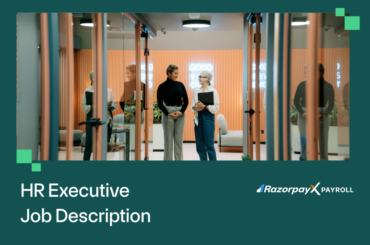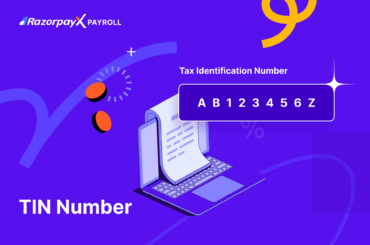Every business, small or large, has to process and execute payroll. While performing payroll calculations, the concerned team follows a specific set of rules. These rules govern salary payments, tax deductions, PF contributions, and many more.
Since there is a lack of specific rulebook for payroll processing, some laws are wrongly interpreted by the businesses. Unawareness of changes to a particular law or regulation adds up to it.
The misinterpretation of law over the years has given rise to quite a few myths about payroll, making the entire process seem intimidating.
Let’s decode the facts about payroll in detail, and then execute payroll accurately.
Table of Contents
Myth – PF is calculated only on basic salary
Many employers consider basic salary alone for PF calculations. Since the Supreme Court ruling on PF wages took place on 28th of February 2019, this practice does not hold good anymore.
Fact: PF should be calculated on employee’s fixed salary
The Supreme Court ruling held that the allowances paid by an employer to its employees will be included as a part of basic wages and will be subject to PF contributions.
But, here are some exceptions.
- Variable allowance or allowances that are linked to any incentive for production, resulting in greater output by an employee
- Allowances paid across the board to all employees of a particular category
- Allowances that are paid especially to those who availed the opportunity
- Allowances that formed a part of basic wage and are covered as allowances to avoid deduction and contribution to PF
HRA is not paid to many employees/workers around the country. Also, sometimes it is paid to some employees and not to others by the same employer. So, it stands excluded from PF contributions. Similarly, overtime allowance/bonus/incentives are provided by all employers but not earned by all employees and hence stands excluded too.
Therefore, PF contribution has to be calculated at the rate of 12% of an employee’s fixed wages, including basic pay, special allowance, but excluding HRA, overtime allowance, etc.
Myth – Employees bear PF admin charges
Some employers transfer the cost of managing a PF to employees by making it a part of the CTC. However, this practice is wrong.
Fact – PF charges should be borne by the employer only
PF admin charges are the charges allocated outside of the employer’s PF contribution. The employer entirely bears these charges. So, if an employer contributes 12% of the fixed wages (excluding HRA), 0.5% admin charges will be added to the 12%. This means the total cost to the employer would be 12.5%.
This additional charge should be treated as an expense in the profit & loss of the employer’s balance sheet. The 12% employee’s contribution will be deducted entirely for PF, and no charges will be debited from the employee’s salary.
Myth – LTA deduction can be claimed every year
Employees submit LTA bills to their present employers and claim tax benefits every year. This practice is unethical.
Fact – LTA deduction should be claimed only twice in a block of 4 years
Employees tend to switch and do not inform their new employers about LTA exemptions claimed previously.
According to the Income Tax laws, an employee can claim LTA exemption for only 2 domestic travels within a block of 4 calendar years. The exemption is available only on the travel cost incurred or the LTA received by the employee, whichever is lower.
There is no way for employers to collect information about employees’ previous LTA exemption claims. But, this tax-saving approach might invite trouble for employees.
If an employee has claimed LTA exemption twice in the block of 4 calendar years, they should inform their current employer to avoid notice from the IT department.
LTA exemption is not allowed under the new tax regime introduced in Budget 2020.
Myth – CTC including medical & transport allowance is not outdated
Many employers include medical and transport allowance in the CTC structure. However, this practice is redundant.
Fact – Including medical & transport allowance is irrelevant
In the Union Budget 2018, the Finance Minister introduced a standard deduction of Rs 40,000. This deduction replaced medical and transport allowance tax benefits.
Before 2018, these allowances were a part of the CTC. The employees claimed tax benefit on the medical allowance of Rs 15,000 and a transport allowance Rs 19,200.
Since exemptions were replaced with a standard deduction, making medical and transport allowance a part of CTC is unnecessary. Employers can withdraw these allowances and park the funds as special allowance.
Also, the threshold of Rs 40,000 was increased to Rs 50,000 in the Union Budget 2020.
Myth – Spreadsheet-based payroll is simpler and error-free
Businesses start payroll processing on spreadsheets because there are no initial investments. They try to save their budgets by using manual payroll methods. However, this practice can take a toll in future.
Fact: Spreadsheets are prone to errors
The spreadsheet-based payroll calculations are lengthy and time-consuming. Here are some limitations to this method.
- High chances of mathematical and clerical errors as details are entered manually
- Odds of duplications and omission of entries rises
- Difficult to monitor and update spreadsheets with compliance changes
- Complications in adding and removing employees
- Excessive hours spend by concerned teams on payroll processing every month
- Increase in costs as businesses need to hire skilled folks for payroll calculations
However, more than half of Indian businesses still rely on paper or spreadsheet-based payroll management for payroll processing.
RazorpayX Payroll – Execute your payroll accurately
With constantly changing regulations and the drawbacks of using traditional methods, effective payroll software is the need of the hour.
At RazorpayX Payroll, we have decoded what it means to have an effective payroll system. It processes and executes payroll seamlessly in a single click. It not only calculates salary or compliance payments but also executes payroll.
Let’s see how RazorpayX Payroll combats all the myths about payroll and makes payroll execution – A Cakewalk!
- The software computes employees’ PF contributions at 12% of the fixed wages that includes basic salary, special allowances and excludes HRA
- It includes PF admin charges as a part of employers’ PF contributions and doesn’t deduct it from employees’ salary
- Employers can automatically bifurcate CTC and exclude medical & health insurance components
- Eliminates the usage of spreadsheets by automating the entire payroll process including compliance payments and contractor payments
Moreover, RazorpayX Payroll provides an intuitive and easy to use interface for businesses and their employees. It also provides transparency to employees by making all employee-related documents available to them at all times.
Also, it does away with duplication or omission errors involved in traditional payroll methods and brings down the processing time days to minutes. Since RazorpayX Payroll fully complies with regulations and laws, businesses do not have to worry about decoding and monitoring compliance changes.





